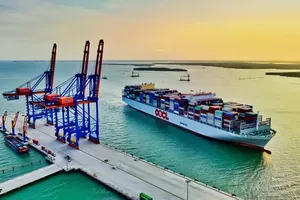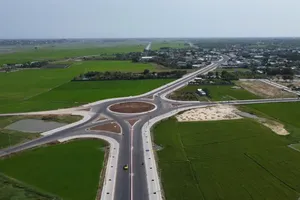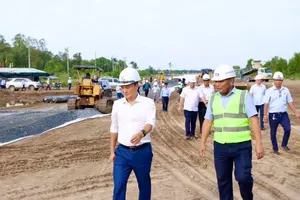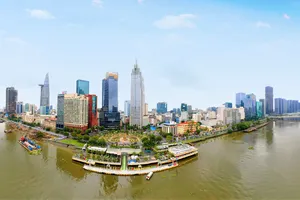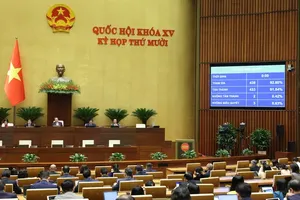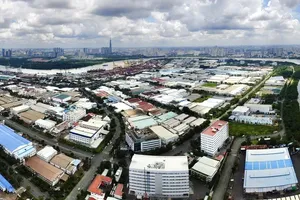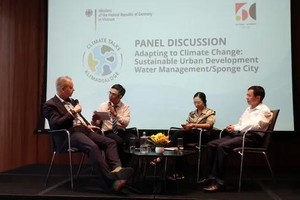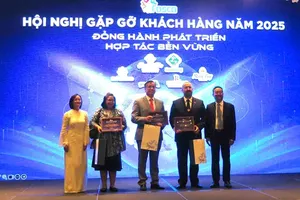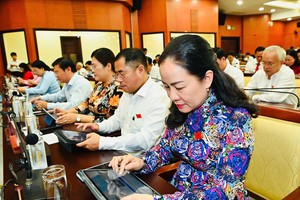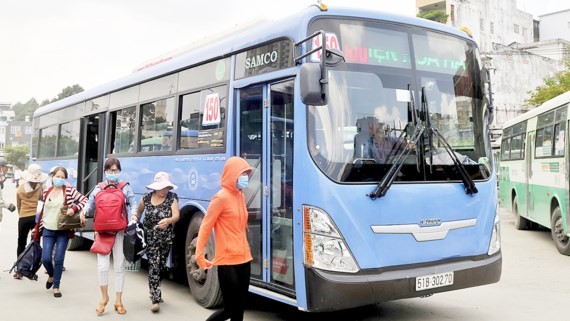
According to HCMC Public Passenger Transport Management and Operation Center, the city now has 2,586 buses in operation. Of these, 299 are CNG fueled, 2,266 diesel fueled and 21 gasoline powered buses.
Explaining the low number of CNG buses, bus companies said that this type of vehicle is priced 20 percent higher than normal buses. For instance, the price of an 80 seater bus using gasoline approximates VND2.4 billion (US$106,000) but it is VND2.75 billion for a CNG bus of the same size. Meanwhile, the city has not had a suitable subsidy mechanism to develop the environmentally friendly vehicle.
Mr. Nguyen Van Trieu, chairman of May 19 Cooperative and deputy director general of HCMC Bus Cooperative Alliance, said that subsidy level for CNG buses is equal to gasoline fueled vehicles. Most of buses newly bought under the city’s project to renew 1,680 buses have not received loan interest assistance as per regulations.
With current interest rates, a CNG bus in operation must pay VND35-40 million ($1,540-1,760) a month within seven years to clear original debt and interest. Moreover, the subsidy level in 2017 has been cut 20 percent over the previous year.
High private vehicle volume has contributed to traffic jam, making buses unable to ensure their routes and discouraging passengers. Many routes using gasoline and diesel fueled buses have seen revenue insufficient to make up expenditure.
Sharing the same view, a bus company leader said that the HCMC Department of Transport should work with authorized agencies to issue the preferential bus fare list for students and workers, have capital and interest rate assistance policies for CNG buses, not reduce the subsidy and extend the deadline to replace expired buses until 2019.
Short of CNG fueling stations
Associate professor Dr. Nguyen Thi Bich Hang from HCMC Transport University, said that a survey on three CNG buses in operation in the city shows that a bus consumes an average of 39.6 kilogram of CNG per 100 kilometers. After one year of pilot operation, these buses save over VND2 billion ($88,000) equivalent to 23 percent fuel cost. CNG use is safe, efficient and environmental friendly.
Besides the subsidy mechanism, the city should invest in CNG fueling stations, which are few and far from buses stations now. In South Korea, businesses will be assisted with US$700,000 and spend a small amount on building a CNG station while in Vietnam they must spend $1 million, which is beyond most transport firms’ ability.
Director of the HCMC Public Passenger Transport Management and Operation Center Tran Chi Trung says that the center is adjusting and supplementing subsidy funding for transport companies to operate efficiently and well perform the policy of renewing bus fleet in the city.
Aside from that, the center has coordinated with media agencies and transport firms to speed up propaganda to attract more bus passengers, speed up the progress of electronic ticket project on subsidized buses and bus priority lanes and continue investing in infrastructure to facilitate bus operation.
Deputy director of the Department of Transport Tran Quang Lam affirmed that the agency will coordinate with relevant agencies to clear difficulties for bus service to develop. It will ask for assistances from the city People’s Committee to invest in school buses and adjust subsidy level to suit practice and obtain the target that 15-20 percent of students in the city will go to school by bus by 2020.
The agency will also propose the committee to have mechanisms to encourage investment in CNG fueling stations.
Other public transport experts said that besides CNG bus development mechanisms, authorized agencies should carefully estimate reasons for the unattractiveness of bus service to local residents.
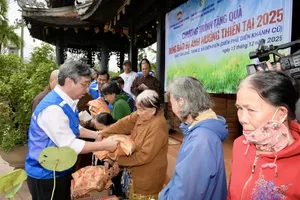

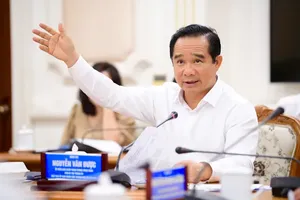
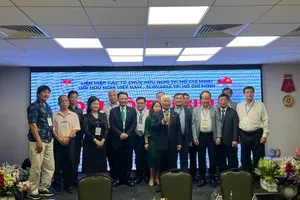

)
